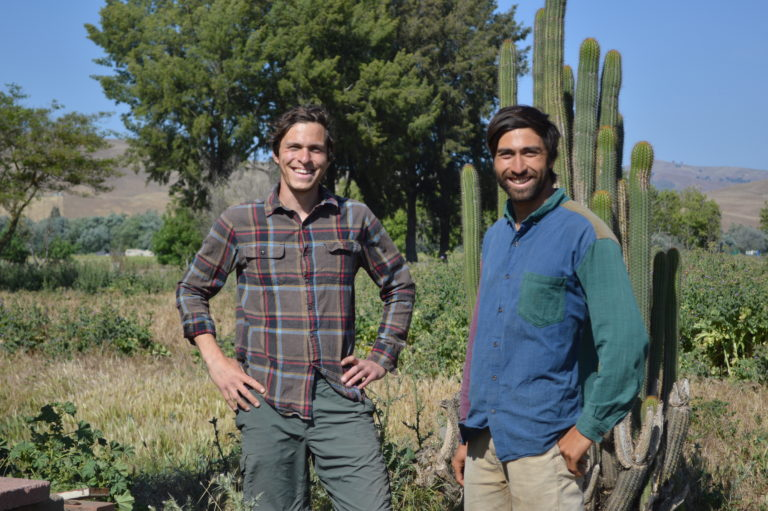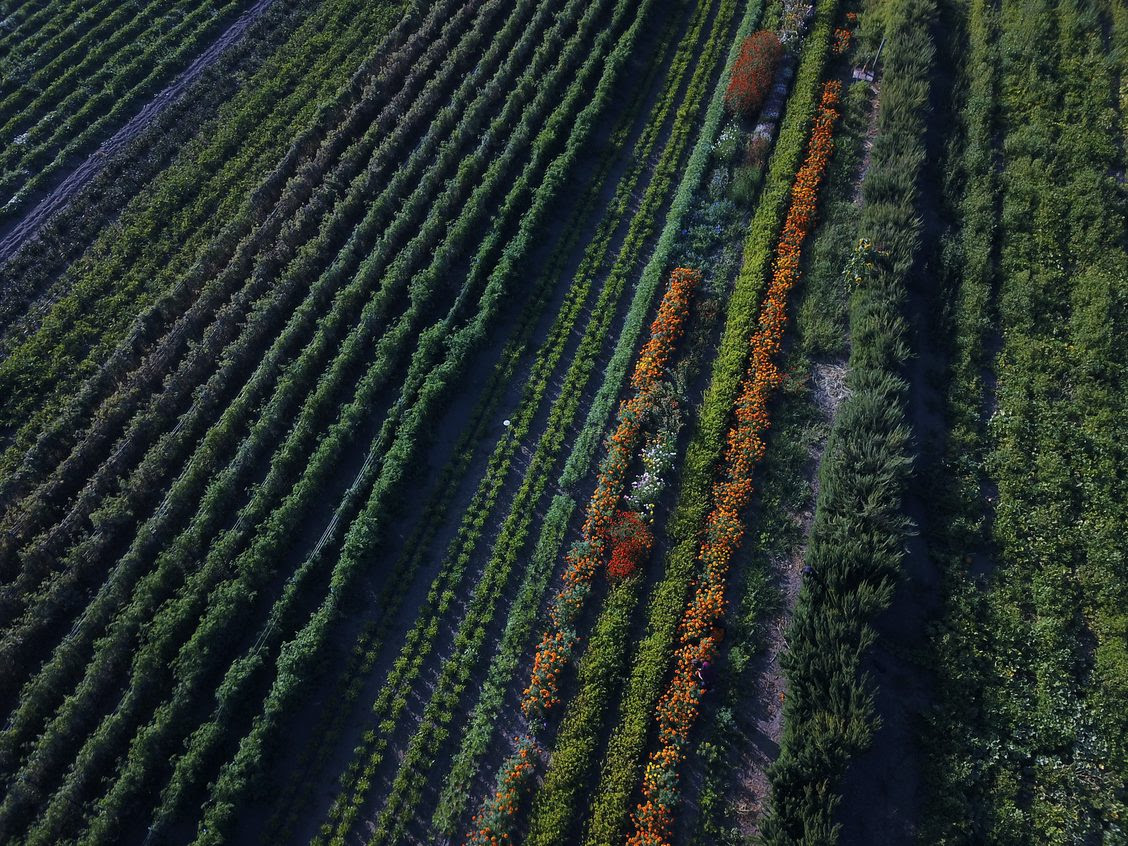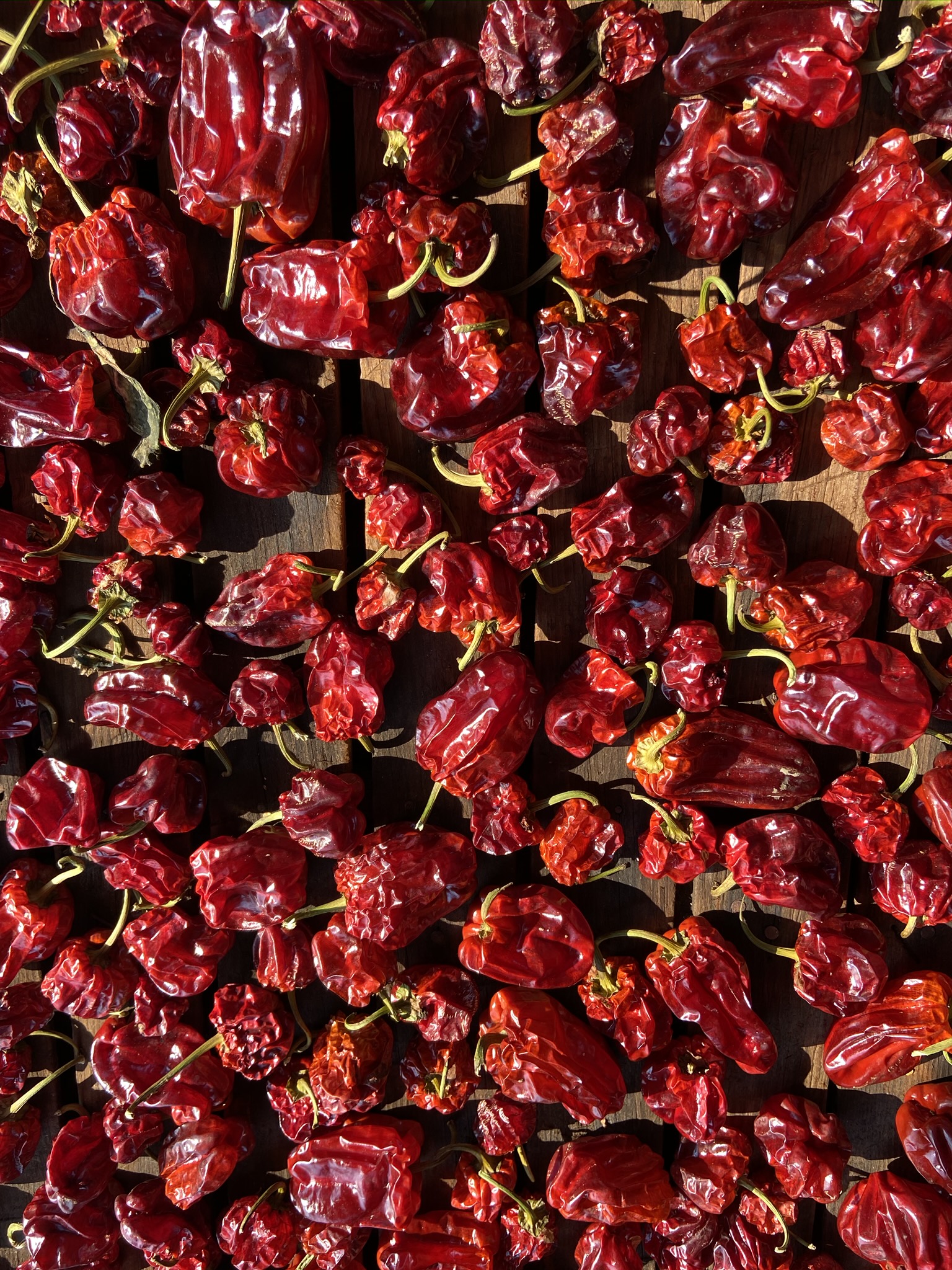Fire Tongue Harvests Farm-to-Table Spice
- By Gabe Ouzounian
- Translated by
- 30 November, 2022
Based in the temperate Hollister area in California, Levon Minassian and Ryan Silsbee set out in 2014 to bring rare pepper varieties to the region using the different microclimates in the state. Five years after opening their original 7-acre farm, they now grow a multitude of varieties of peppers in the coastal breezes of the Santa Cruz coast, the Mediterranean-like San Juan Valley, and in the raw heat of Capay Valley, with more locations planned for this year.
 Fire Tongue Farms co-founders Levon Minassian (left) and Ryan Silsbee | Photo Credit: Fire Tongue Farms
Fire Tongue Farms co-founders Levon Minassian (left) and Ryan Silsbee | Photo Credit: Fire Tongue Farms
Minassian said that he and Silsbee came up with the idea while Minassian was attending Berkeley for agricultural law. When the two met while managing food for their student co-op, they found interest in the growing process and decided on peppers, as they both had tended small gardens where that was a focus.
“Fire Tongue started as a side project while I was working at an agricultural tech company,” said Minassian. “In my day job, I interact with [many tech types] and look at smart uses of resources, water, labor, and sustainability. Fire Tongue is seasonal and scratches that itch for working with that sustainability.”
Minassian, a Syrian-Armenian on his father’s side, grew up eating Aleppo peppers and other spicy meals common in Syrian and Armenian cuisines. Exposure to other peppers, such as Mexican, Italian, and Hungarian varieties in the Bay Area, helped Minassian’s choice to go into spice production, an easy one.
 A bird's eye view of the Fire Tongue Farm plantations | Photo Credit: Fire Tongue Farms
A bird's eye view of the Fire Tongue Farm plantations | Photo Credit: Fire Tongue Farms
“When I started a chili pepper business, my goal was to be able to grow varieties common to several diasporan communities unable to find them easily here in America. So naturally, I had to grow the Aleppo pepper to share spice from my family's culinary background.”
For Fire Tongue, another essential factor is transparency in production. “If you look at our customers, the reason they come to us is traceability,” he said. “There is a lot of interest in farm-to-table in this area, but the spice lags in that sense. How long does this pepper grow, and under what conditions? Where is the farm, and how long does it take to get from processing to distribution? We understand that people are willing to pay for that transparency, which fits our interest in basing the brand on quality, flavor, and good practices.”

As for 2022, Minassian said Fire Tongue is planning on growing new pepper varieties in different areas around California and expanding to include varieties of Korean peppers, ghost peppers, Carolina Reapers, Scotch bonnets, and, finally, Aleppo peppers.
After a recent trip to Armenia, he returned to the States with a suitcase of dried pepper types for inspiration. Some were new, but some were nostalgic. He continues, “My dad grew up in Aleppo before emigrating to the US. My grandma used to always use Aleppo pepper ("Halaby Beber") in powdered form in many different Mediterranean-inspired dishes like madzoon ov kufte and fasolia. She [sprinkled] it on lots of other meals involving eggs, hummus, or lahmajoun.” Find their spices to order and learn more about the company at firetonguefarms.com for farm-to-table spices that bring a certain warmth to any comfort cuisine.
-
21 December, 2022
-
15 December, 2022
-
26 August, 2022
-
11 August, 2022



